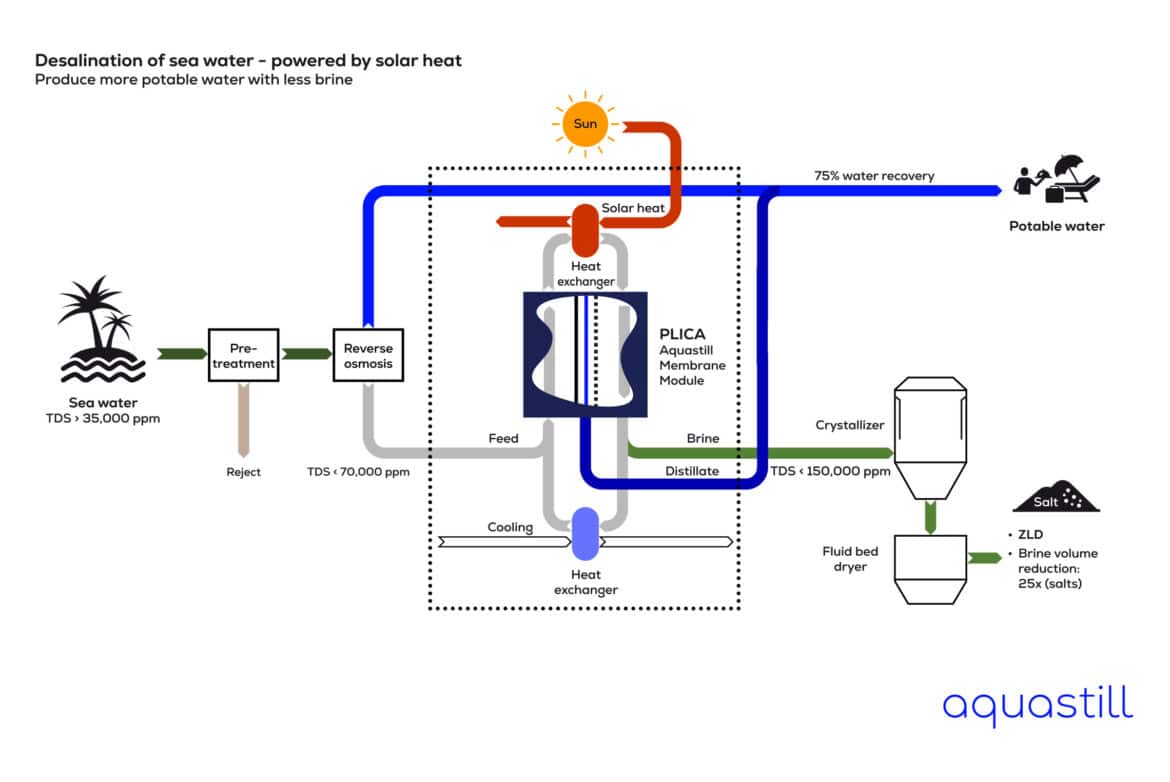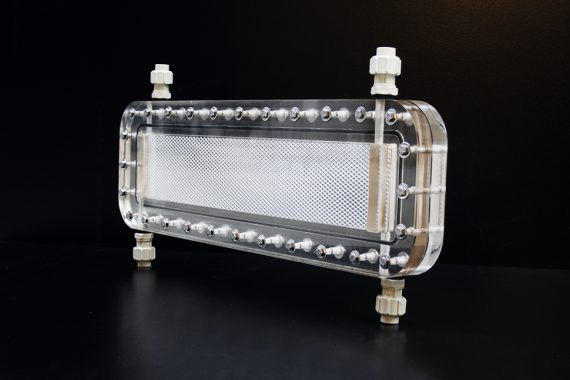Produce more potable water with less brine.
In small rural/residential communities in remote sunny locations not connected to the water and/or electricity grid, sources of clean water are becoming scarce as these communities are in dire need of safe potable water suitable for drinking and irrigation. Many other desalination technologies, such as pressure driven and thermal technologies, are already in these areas attempting to fill an increasing need for clean water. However, many of these technologies are not suitable, too costly or simply not able to provide for these small remote locations. With increasing environmental regulations protecting nature and wildlife, high water recovery has become a pressing issue.

Because these communities are mainly in remote sunny locations but often not connected to the grid, it is becoming more common to use the sun as a renewable energy source to power up the desalination of seawater and/or brackish water. Solar thermal energy can be up to 70% more efficient than solar photo voltaic (PV), which makes the thermally driven process of membrane distillation (MD) a very attractive solution.
Membrane distillation: higher water recovery rate and salinity limit.
Pressure driven technology, such as reverse osmosis (RO), is still the most common desalination technology. However, the water recovery rate and salinity limit are not as high as with membrane distillation. Thus, MD can be coupled with RO in order to increase the overall water recovery of the desalination system. This can be done by using residual electrical energy to circulate the water at low pressures and by using thermal energy for solar thermal collectors.
Reducing environmental impact.
Since MD can operate at much higher salinity then RO, the intended setup is to use the concentrated brine from RO to feed the MD system. This can reach a TDS of 150,000 mg/L. This means that the overall potable water recovery of this system could be as high as 75% compared to the usual 50% of the RO alone. That results in a brine volume reduction by a factor 4 (instead of 2). Additionally, since for the RO system some pre-treatment is already in place to avoid scaling in the membranes, no additional pre-treatment is necessary for the MD system.
Moreover, a zero liquid discharge (ZLD) approach can be more easily applied in order to further increase the overall water recovery. With already 2 streams of potable water exiting the RO and the MD systems, the concentrated brine from MD can for example be further sent to a crystallizer and a fluid bed dryer to extract the salts from this very saline stream. This results in more then 99% of brine volume reduction, which reduces considerably the impact on soil and sea.
With this application of membrane distillation, incorporated with other desalination technologies and solar energy in remote sunny locations, it becomes possible to provide such an essential need to these communities in a higher amount and with very little reject, as well as in an economical and sustainable manner.
Knowledge
Contact











